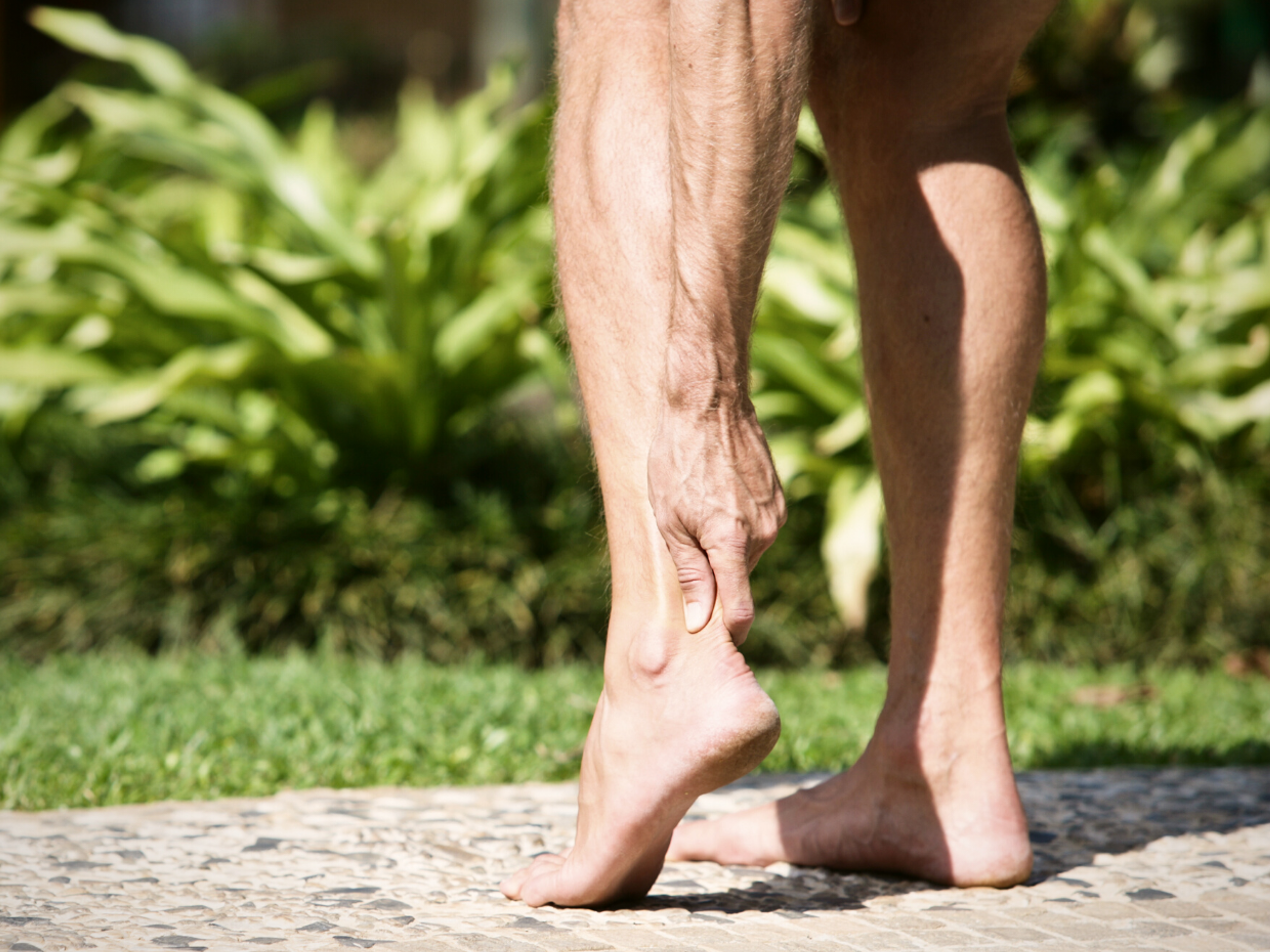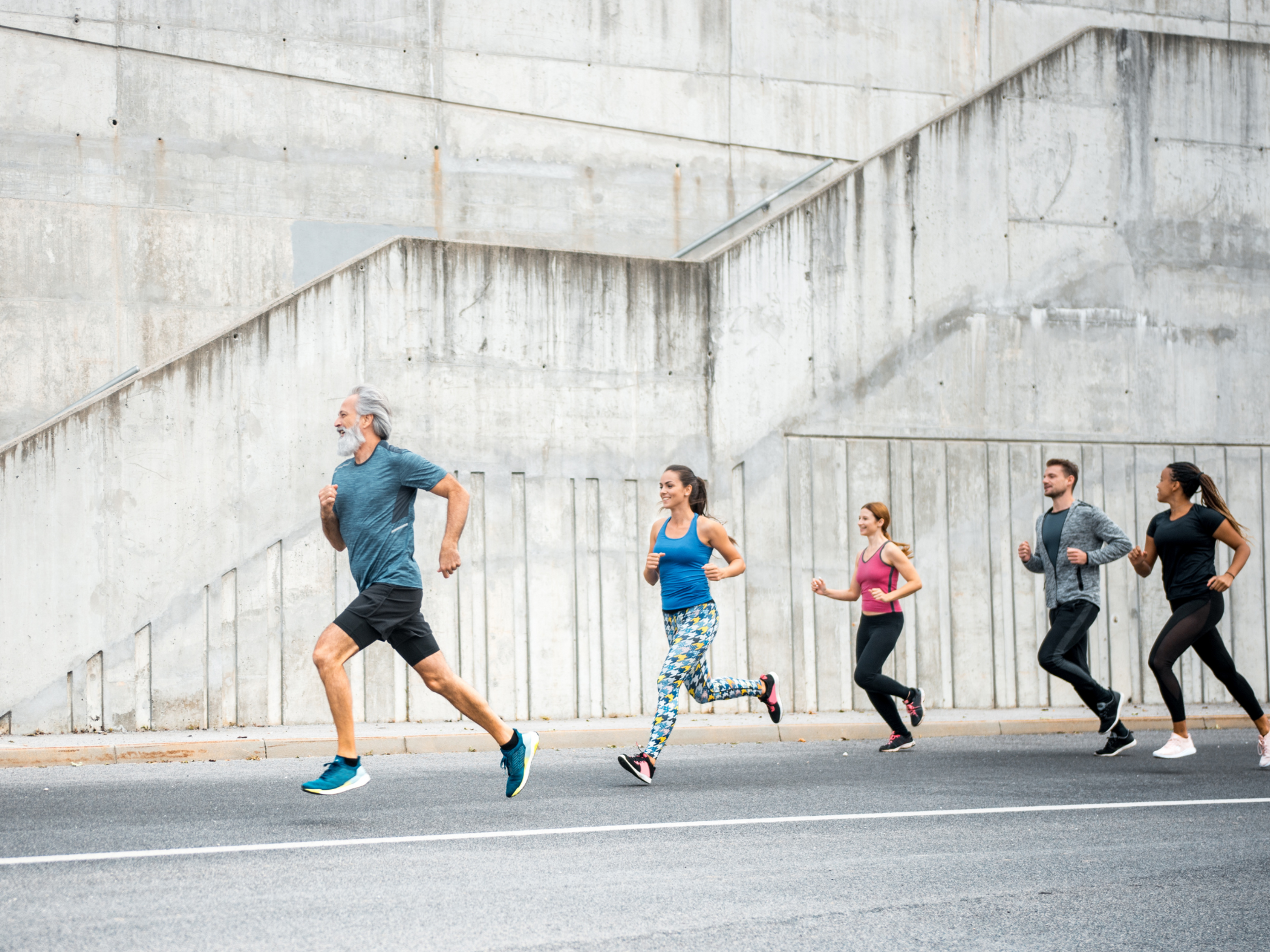Quadriceps tendonitis exercises to avoid (and what runners should focus on instead)
How tendonitis affects your quadriceps tendon
Once injured, the quadriceps tendon:
- Loses some of its strength and endurance
- Becomes very sensitive to being stretched and compressed
Why it matters - This is why movements and activities that used to be OK now suddenly hurt.
Quadriceps tendonitis exercises to avoid (initially)
1. Quad stretches
Runners with quadriceps tendonitis are often told that their quads are too tight and to blame for their injury. But, the research doesn't support this advice, and these stretches often increase pain.
Why quad stretches cause trouble
Your quadriceps tendon attaches your quadriceps (front thigh muscles) to your kneecap.
When you stretch your quads, you pull the quadriceps tendon tight over the lower end of the thigh bone, causing it to press against it - this often irritates an injured tendon, similar to pressing on a bruise.
Examples of stretch exercises to avoid
What to do instead
- Strength training exercises (like those listed below) restore your tendon's strength and capacity to tolerate loads.
- Progressing your strength training exercises from positions of low stretch to positions of more stretch also helps improve your tendon's tolerance to compression.
2. Deep squats (below 90-degrees knee flexion)
Squatting too low too soon can often increase your pain.
Why low squats cause trouble
The deeper you squat, the more your quadriceps tendon stretches and compresses against your thigh bone (pressing "the bruise" again).
Examples of deep squats
What to do instead
- Start with shallow (high) squats
- and slowly increase your depth as your tendon recovers.
We explain how to do this below.
You can add them later
The Exakt app simplifies managing quadriceps tendonitis and understanding your body's limits. The App, designed by expert physical therapists, offers personalized exercises and robust monitoring tools that help you determine your tendon's load tolerance and track your recovery progress.
The best exercises for quadriceps tendonitis
Strengthening exercises are best for recovering from quadriceps tendonitis.
General exercise guidelines
It is usually OK to feel a slight discomfort while doing the exercises (up to 3/10 on a pain scale as long as:
- The discomfort caused by the exercises settles back down shortly after you stop the workout
- AND it doesn't significantly increase your tendon pain in the 24 hours following the exercises.
Progress or adapt the exercise dosage accordingly:
- If your pain flared up significantly, reduce the amount you do;
- If your knee tolerated it well, continue with that level of exercise or even increase it slightly
Top tip
1. Isometric squats
With isometric squats, you maintain (hold) the squat position for several seconds.
Benefits of isometric squats include:
- Reducing pain
- Helping restore your quadriceps tendon's strength
- Getting the tendon used to compression by lowering the position slowly over time
Start with:
- High wall-sits - the more you flex your knee, the higher the load on the quadriceps tendon
- Short duration holds - longer holds require better endurance
- Using bodyweight only
You can progress the isometric squat exercise by:
- Increasing the hold times
- Lowering your position until your tendon tolerates holding it at a 90-degree knee bend
- Adding or increasing the weights
- Doing them on 1 leg instead
- Doing more repetitions
Don't rush your progress
How often can you do them?
How often you can do these exercises will depend on how well your tendon tolerates them:
- Some people get better results when they do them daily (even with added weights)
- Others find that their tendons require a day or two of recovery time between sessions
- Test what works best for you
2. Isotonic squats
Isotonic squats are any squat exercise where you repetitively move in and out of the squat position.
Benefits of isotonic squats include:
- Restoring your quadriceps tendon's functional strength (they mimic the movement we use when running and walking)
- Gradually restoring your tendon's high-load strength
- Restoring your tendon's tolerance to high compression forces
Start with:
- High box squats - the box prevents you from accidentally squatting too low if your tendon's not yet ready for it
- Bodyweight only
- Supported on two legs
You can progress isotonic squats by:
- Squatting deeper - although it's usually best not to squat below 90 degrees until you've fully recovered
- Adding or increasing the weights
- Doing them on 1 leg instead of 2
- Doing more repetitions or sets
Remember, the best way to avoid flare-ups is to increase it slowly.
Leave at least 2 to 3 days between doing these exercises:
- Isotonic squats (especially once you progress them) count as high-load exercises for your quadriceps tendon.
- Meaning that your tendon needs more time to recover after them.
- If you do them too often, you will likely overload your tendon and flare up your injury.
How much strength do you need?
3. Hopping and jumping
Plyometric exercises (hopping and jumping) mimic the squat action but use quick, forceful contractions. These exercises are only required if your ultimate goal is to get back to a running or jumping sport.
Benefits of plyometric exercises include:
- Restoring your tendon's ability to tolerate the forceful contractions created by running and jumping
Start with:
- Shallow jumps - the higher you jump, the higher the load
- Jumping on 2 legs
You can progress plyometric exercises by:
- Jumping higher
- Jumping further
- Jumping into different directions
- Jumping on 1 leg instead of 2
- Doing more repetitions or sets
Plyometric exercises also count as high-load exercises
To allow enough recovery:
- Only do them once or twice a week
- and leave at least 48 hours between sessions.
Be strategic about your training
How we can help
The Exakt app guides you through the rehab process step by step. It provides straightforward advice on when to progress, maintain, or take your exercises back a level — helping to minimize flare-ups and keep you on track with your recovery.


